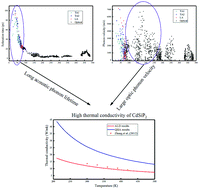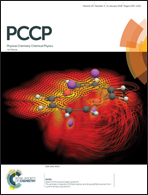Intrinsic sources of high thermal conductivity of CdSiP2 determined by first-principle anharmonic calculations
Abstract
CdSiP2 is an outstanding mid-infrared nonlinear optical crystal material with high thermal conductivity. However, the microscopic physics behind its thermal transport behavior is still unclear. In this study, we have investigated the source of the thermal conductivity of CdSiP2 based on anharmonicity lattice dynamics (ALD) and the first-principle calculation. The results are well accordance with the experimental measurement in a wide temperature range. Based on our results, the acoustic phonon lifetime of CdSiP2 is higher than that of the thermoelectric and semiconducting materials reported in previous studies, which is induced by the low lattice anharmonicity demonstrated by CdSiP2. The mode-dependent thermal conductivity is obtained with the contribution of optical phonons being significant (27%) above 300 K; this is mainly due to the high phonon group velocity and relatively long phonon lifetime of low-energy optical phonons (80–200 cm−1). A high lifetime of acoustic phonons and remarkable contribution of low-energy optical phonons can be responsible for the high thermal conductivity of CdSiP2.



 Please wait while we load your content...
Please wait while we load your content...